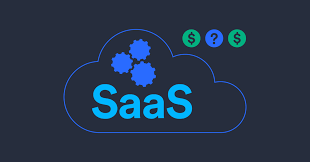Physical Address
304 North Cardinal St.
Dorchester Center, MA 02124
Physical Address
304 North Cardinal St.
Dorchester Center, MA 02124

The Software-as-a-Service (SaaS) industry is evolving rapidly, and so are its pricing strategies. With increasing competition and shifting customer expectations, SaaS companies are adopting innovative pricing models to enhance user acquisition, retention, and revenue growth.
This article explores the latest trends in SaaS pricing, including usage-based pricing, hybrid models, AI-driven pricing strategies, and subscription innovations that will shape the industry in 2025 and beyond.
🔹 Customer Expectations Have Changed – Users now prefer flexible, scalable, and usage-based pricing models.
🔹 Competitive Market Pressures – The rise of new SaaS startups forces companies to differentiate through pricing.
🔹 AI & Data-Driven Insights – AI-powered analytics allow companies to optimize pricing based on user behavior.
🔹 Economic Uncertainty – Businesses demand cost-effective pricing models to reduce long-term commitments.
📌 Example: Instead of paying a flat fee, businesses prefer pay-as-you-go models, only paying for the features they actively use.
Companies charge customers based on actual consumption, making pricing scalable and cost-effective.
✅ Best for: Cloud computing, API-driven SaaS, analytics tools, AI services
✅ Benefits: Fair pricing, flexibility, aligns with customer growth
📌 Example: AWS and Twilio charge based on computing power and API requests instead of a fixed subscription fee.
AI analyzes real-time user behavior, market demand, and competitor pricing to adjust subscription costs dynamically.
✅ Best for: SaaS tools with fluctuating demand (e.g., e-commerce, cloud storage, AI services)
✅ Benefits: Maximizes revenue while offering competitive pricing
📌 Example: AI-driven pricing can lower costs during off-peak times to attract users while increasing prices during high demand.
Freemium remains popular, but AI-powered upselling personalizes upgrade suggestions based on user activity.
✅ Best for: SaaS startups, productivity tools, AI assistants
✅ Benefits: Higher conversion rates, lower barriers to entry, improved monetization
📌 Example: Notion and Grammarly offer free versions but use AI to suggest premium features based on user habits.
Instead of rigid plans, flexible tiered pricing lets users select custom feature bundles based on their needs.
✅ Best for: B2B SaaS, collaboration tools, marketing automation platforms
✅ Benefits: Higher customer retention, better user satisfaction
📌 Example: HubSpot and Salesforce offer tiered pricing but allow customers to choose additional modules as add-ons.
Combining subscription, usage-based, and feature-based pricing into a single, adaptable model.
✅ Best for: SaaS products with both fixed and variable costs
✅ Benefits: Balances revenue predictability with customer flexibility
📌 Example: Zoom offers a base subscription but charges extra for webinars and cloud storage beyond a certain limit.
Traditional per-user pricing is evolving to include AI-powered group discounts, team-based pricing, and pooled licenses.
✅ Best for: Enterprise SaaS, collaboration tools, HR & payroll platforms
✅ Benefits: Encourages team adoption, reduces customer churn
📌 Example: Slack charges based on active users instead of fixed seats, preventing overpayment.
✅ Leverage AI & Analytics – Use AI to analyze customer usage and optimize pricing in real time.
✅ Offer Flexible Plans – Provide multiple pricing options to cater to different customer segments.
✅ Reduce Entry Barriers – Use free trials, freemium models, and AI-driven onboarding strategies.
✅ Personalize Pricing – Use customer data to offer discounts, upgrade suggestions, or dynamic pricing.
✅ Monitor Competitor Trends – Stay ahead of pricing shifts in the industry to maintain competitiveness.
📌 Example: Netflix uses AI-driven price optimization, adjusting plans based on location and user engagement trends.
🔹 AI-powered predictive pricing – AI will anticipate user needs and suggest the best pricing plan.
🔹 NFT-based licensing – Blockchain could introduce transferable, tokenized SaaS subscriptions.
🔹 SaaS as a Service (SaaSaaS) – Subscription models that allow dynamic plan switching based on user needs.
🔹 Decentralized SaaS Pricing – Community-driven, transparent pricing powered by Web3 technologies.
📌 Example: AI-driven pricing algorithms may predict a customer’s likelihood to upgrade and offer customized discounts to convert them into paying users.
As the SaaS industry becomes more competitive and customer-centric, companies must innovate their pricing strategies to maximize revenue while ensuring affordability and flexibility.
💡 The key to success? Combining AI-driven pricing, flexible subscription models, and personalized offers to create a win-win scenario for businesses and customers alike.